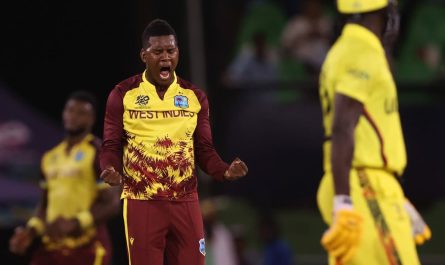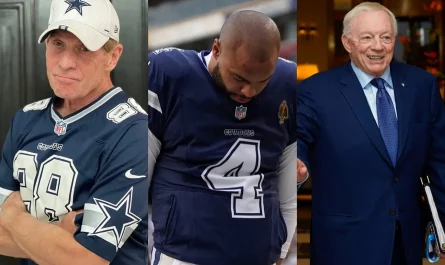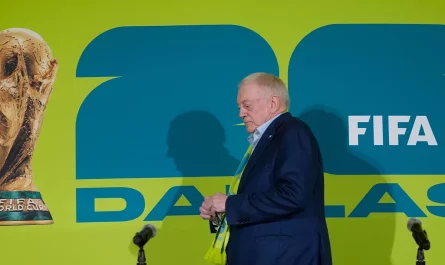To extend the accuracy and velocity of determination making, the IPL will introduce the Good Replay System this season.
ESPNcricinfo has realized that underneath the Good Replay System, the TV umpire will obtain inputs straight from two Hawk-Eye operators who might be sitting in the identical room because the umpire and supply him with photographs captured by eight of Hawk-Eye’s hi-speed cameras throughout the bottom. The TV broadcast director, who till now was a conduit between the third umpire and the Hawk-Eye operators, will not be concerned underneath the brand new system.
It’s understood that the Good Replay System will enable the TV umpire to confer with extra visuals than he beforehand had entry to, together with split-screen photographs. Take the instance of an overhead catch taken mid-air by the fielder on the boundary rope. Previously the broadcaster was unable to supply a cut up display screen of the fielder’s toes and fingers on the exact second when the ball was caught. Below the brand new system, a cut up display screen can present the umpire when the ball was caught or launched, alongside synchronised footage of when the foot touched – or did not contact – the rope.
There are eight Hawk-Eye cameras at any match: two both sides of the bottom on the straight boundaries and two both sides at sq. leg. Till IPL 2023, Hawk-Eye cameras have been primarily used for ball monitoring and Extremely Edge. So, outdoors of checks for lbws and edges, the broadcaster largely used footage from their very own cameras for any on-field referral. That included referrals for stumpings, run-outs, catches and overthrows.
Within the case of a stumping referral, underneath the Good Assessment System, the TV umpire will ask the Hawk-Eye operators to point out him the cut up display screen. In case there’s a seen hole when the ball handed bat, he is not going to ask for the Extremely Edge (to see if it was a caught behind) and as a substitute straight proceed to examine the side-on overview for the stumping. If the TV umpire would not see a transparent hole between bat and ball, or he would not see a transparent deflection of the ball off the bat or pad, solely then he’ll confer with Extremely Edge.
For stumpings, the brand new system will present the TV umpire tri-vision – basically footage from each side-on cameras in addition to from front-on in a single body. The front-on digital camera angle is vital as a result of it provides an correct image of bails being eliminated. Beforehand the broadcaster would present the side-on angle from both sides together with footage from Stump Cam. However Stump Cam information the motion at a low velocity of roughly 50 frames per second, versus the Hawk-Eye cameras which report at roughly 300 frames per second, that means there’ll now be extra full and correct footage for the umpires to base their determination on.
The Good Assessment System can be probably to supply extra readability within the case of a catch taken inches off the turf. Such referrals have previously sparked debate over the TV umpire’s determination, with the video proof upon which that call was based mostly seemingly not conclusive. That is what would occur underneath the previous system: the TV umpire would ask the TV director to supply him with the very best angle out there to supply readability on whether or not the ball bounced earlier than the fielder pouched it or if the fingers have been underneath the ball. Commonly the TV umpire would ask for zoomed-in visuals, however nonetheless not at all times get definitive proof.
Now, underneath the Good Assessment System, Hawk-Eye will present a single body straightaway with photographs from front-on and side-on angles. The TV umpire can then select to zoom in from a specific angle.
It’s understood that the conversations between the TV umpire and the Hawk-Eye operator are prone to be aired reside, permitting the viewer to know the thought-process behind choices higher.
Velocity of play is important in T20 cricket, and the Good Assessment System goals to jump over pointless steps to reach on the proper determination within the smallest period of time. One good instance is lbw evaluations. The protocol to this point entails the TV umpire being supplied initially with Spin Imaginative and prescient, which comes from a digital camera that’s positioned in entrance of the wickets outdoors the boundary on both sides of the pitch. If the ball is near the bat, the TV umpire would then ask to examine Extremely Edge. As soon as happy there was no bat concerned, he would then proceed to examine ball monitoring. Below the Good Assessment System, if the Hawk-Eye operator spots that the ball had pitched outdoors leg, he’ll inform the TV umpire instantly and they’ll then prioritise ball monitoring.
The ECB has beforehand trialled an identical referral system within the Hundred.
The BCCI carried out a two-day workshop on the brand new system in Mumbai on Sunday and Monday for choose umpires. It’s realized that about 15 umpires, comprising each Indian and abroad umpires, will work with the Good Replay System throughout IPL 2024 which begins from March 22.
Nagraj Gollapudi is information editor at ESPNcricinfo




